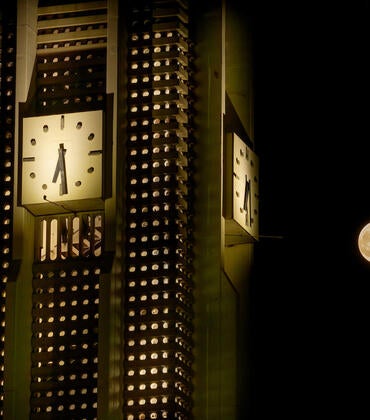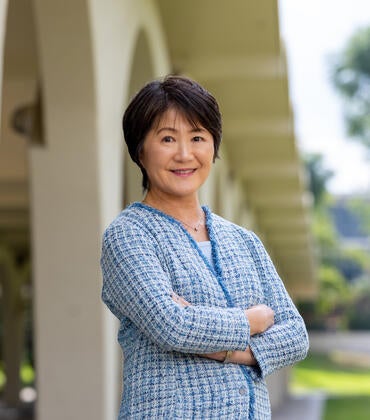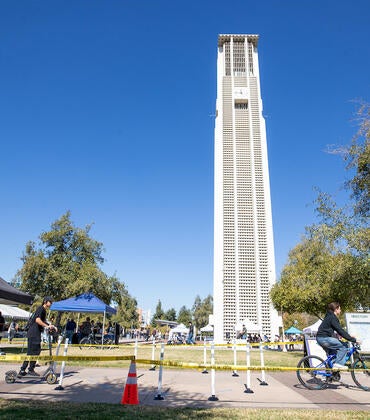Chancellor Kim A. Wilcox used his spring town hall meeting to begin the conversation on what the campus should look like when it celebrates its 100th birthday in 2054.
The April 11 meeting at the HUB served as the formal kick-off for what is expected to be a more than year-long process to create UC Riverside’s next strategic plan.
That plan will set out the broad goals of what the university wants to achieve during the plan’s length, possible a 10-year span, although that has not been decided yet, Wilcox said. Unlike other guiding documents, it’s not required by law, but “it’s something we choose to do” to set priorities and values for future decisions, he said.
The plan will also serve as the first step toward envisioning UCR 35 years from now in 2054, Wilcox said.
“This is a case where we can not only think about what we want to be like when we’re 100, we can create what we look like if we have the right plan,” he said.
The campus is nearing the completion of its current 10-year strategic plan, “UCR 2020: The Path to Preeminence,” which set goals for academic excellence, access, diversity, and engagement. Wilcox said UCR has made progress on all four areas, noting how federal research funding and graduate rates have exceeded their goals.
To provide an example of the scale of change over 35 years, Wilcox’s presentation included pictures from 1984 featuring an old Macintosh computer, a portable phone that resembled a briefcase with a cord and handset, and former Chancellor Tomás Rivera at a desk with a typewriter as the centerpiece. Even Scotty had a different look in 1984.
“Sit and think and dream a little bit about 2054,” Wilcox said, taking a 15-minute break where he asked the attendees at each table to write up their ideas on a large piece of paper.
Following the break, Wilcox tossed a “catch box,” a small, padded box with a microphone inside, into the audience and asked attendees to share their ideas before tossing it to another table.
Some of the suggestions included increasing the capacity for graduate student teaching and research, and offering more online education.
Provost and Executive Vice Chancellor Cynthia K. Larive followed Wilcox with a presentation on the process the campus will follow in creating the plan, describing it as a dynamic dialogue involving the entire campus community.
“It’s like voting,” she said. “It’s our chance to set the direction of the university for a very long time to come. I think that’s very exciting.”
The strategic plan process is beginning alongside the creation of the Long Range Development Plan, another vital document that will help guide UCR’s future. While the strategic plan sets priorities, the Long Range Development Plan provides the parameters for land-use planning to support those priorities, she said.
As part of the strategic plan process, six committees, made up of administrators, staff, faculty, community, and alumni representatives, will start holding meetings in May and put together a report in December.
The campus community will then have an opportunity to comment on those reports before a draft of the strategic plan is released in February 2020. Following campus input and revisions, a final plan could be adopted by June 2020.
UCR has created a website where the campus can check for regular updates and access documents including the current strategic plan.



